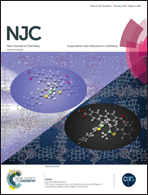Preparation of porous alumina microspheres via an oil-in-water emulsion method accompanied by a sol–gel process
Abstract
Porous alumina (Al2O3) microspheres with incontinuous multicavities have been successfully prepared via an oil-in-water (O/W) emulsion method accompanied by a sol–gel process in the presence of polyvinylpyrrolidone (PVP), sorbitan monooleate (Span 80) and ethyl acetoacetate (EAA). The introduction of PVP as a phase separation inducer into the oil phase of the O/W emulsion leads to the formation of incontinuous multicavities inside the microspheres, and the size of the cavities enlarges with the increase of the amount of PVP, while has no significant influence on the surface morphology and particle size distribution of the microspheres. EAA works as a chelating agent to ensure a spherical shape, and Span 80 acts as a stabilizer to preserve a smooth surface. An appropriate amount of PVP, EAA and Span 80 allow the formation of porous alumina microspheres with incontinuous multicavities. A preliminary mechanism based on phase separation for the structural evolution of alumina porous microspheres with multicavities is suggested. The spheres after heat treatment experience a phase transformation process in the following sequence: amorphous → γ-Al2O3 → α-Al2O3.


 Please wait while we load your content...
Please wait while we load your content...